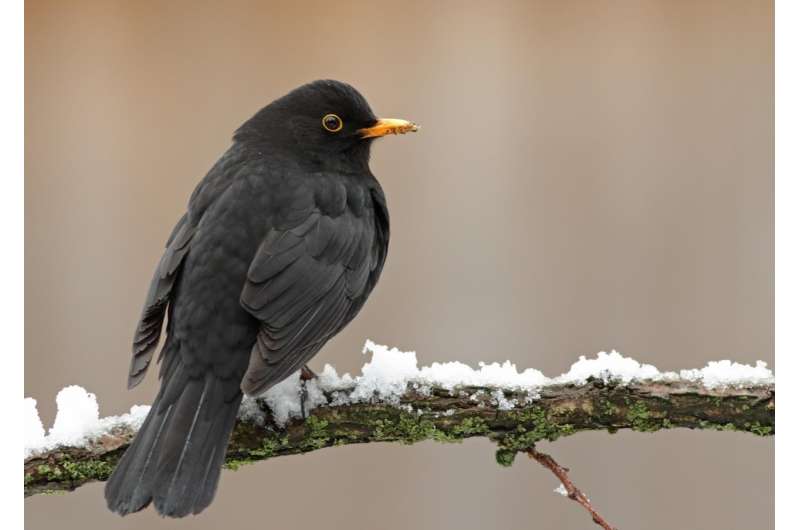City-dwelling blackbirds have poorer measures of health

Blackbirds live longer in cities than in forests. But their telomeres, repetitive stretches of DNA at the ends of the chromosomes, show that these city birds have a much poorer health status than their rural cousins. These findings from a study in five European cities led by University of Groningen biologists were published in Biology Letters on 21 March.
Blackbirds are a common sight in many city gardens. The species has adapted well to this environment. "But they also live in their original forest areas, which makes them ideal candidates for a study of the effect of city life on health," says University of Groningen postdoc Juan Diego Ibáñez-Álamo. He travelled to Granada, Seville, Madrid, Dijon and Turku to obtain blood samples from blackbirds in these cities and adjacent rural areas.
Ibáñez-Álamo is working on a project studying the health effects of city life on birds at the Groningen Institute for Evolutionary Life Sciences. "There are many indicators of health, like the presence of parasites or the immune response, but these will vary over time." The only truly unambiguous marker of health is the length of the telomeres, DNA structures that form a kind of cap at the end of the chromosomes and protect the DNA molecule from deterioration, just like the plastic caps on shoelaces.
During ageing, the telomeres become shorter. But all kinds of stress will accelerate this shortening. So together with University of Groningen Professor of Evolutionary Biology of Ageing Simon Verhulst, Ibáñez-Álamo set out to compare telomere length in city and rural blackbirds. "You can't generalize results from just one city," explains Verhulst. The local population might not be representative. That's another reason why the biologist studied blackbirds: they can be found all over Europe, from Spain to Finland.
In all five cities he visited, Ibáñez-Álamo worked with local scientists, catching birds in mist nets and taking blood samples for the analysis of telomere length. This was done in Groningen, where Verhulst leads one of the reference labs for this technique. Ibáñez-Álamo also checked the plumage of the birds to assess their age. "From the moulting pattern, you can distinguish yearlings from older birds. So we were able to estimate the proportion of older birds in the populations."
The measurements showed that the telomeres of city yearlings were substantially shorter than those of rural yearlings. The difference was even greater in older birds. "The rural populations lived about 30 kilometres from the cities," says Verhulst. Blackbirds can cover this distance within an hour, but their usual dispersal rate is around 3 kilometres, so populations in cities and surrounding rural areas are quite separate.
The city birds therefore showed signs of premature ageing, meaning their health status was poor compared to the rural blackbirds. But paradoxically, the proportion of older birds was higher in the cities. Ibáñez-Álamo: "This means that mortality is lower in the cities, so the advantages of city life compensate for the negative health effects." The mechanism is as yet unclear, but part of the explanation could be that there is less predation or more food in cities.
More work needs to be done to understand how the effect comes about, says Verhulst. "This could be present at birth or develop in the first year, as cities are an unhealthy environment. And it could even be that birds with short telomeres end up in cities and thereby create a population with shorter telomeres."
More information: Urban blackbirds have shorter telomeres, Biology Letters, rsbl.royalsocietypublishing.or … .1098/rsbl.2018.0083
Journal information: Biology Letters
Provided by University of Groningen




















